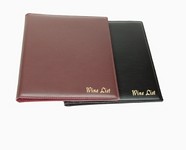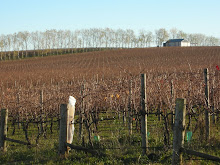Wine industry innovation: Italy after Brunello
De Vinis, the official publication of the Italian Sommeliers Association (Associazione italiana di sommelier – AIS), recently featured an interview with Luca Zaia, Italy’s new agricultural minister.
That Italy has a new government will come as no surprise to any of us; it is also a more right wing government and Zaia comes from the Northern League party – considered one of Italy’s most right wing political parties around.
But for the purposes of the post, I’ll leave politics aside as the intricacies of Italian politics are beyond my comprehension and serve no use here. A word of introduction though is required to put this interview into context.
Italy is virtually beyond crisis in Europe. It’s economy is at a stand still, or worse, in decline, it’s labour market is woeful and it’s losing ground to new EU entries and other stalwarts of the Union that have traditionally been countries that Italy could count on as being worse placed than itself (Spain, Greece and Portugal come to mind). The country is, in short, stagnating.
Why should agriculture then, be so important? The fluffy side of me says it’s about the long held and respected Italian lifestyle and Italian traditions. It should also be noted that this is not just for the south, but the north as well. It’s also a lot about money and the economy – who Italy will feed on its local turf, and who it will export to. And the wine industry goes to the heart of both.
The interview between De Vinis and Luca Zaia is relatively soft, but interesting all the same. The minister’s solution to the stagnation mentioned above can be summarised in one word: innovation.
Zaia says that what the Italian agricultural industry needs most is innovation. “Agriculture and whoever has anything to do with it, needs innovation from any point of view.”
At this point in my post it is prudent to keep in mind the Brunello di Montalcino scandal and all it stands for. I cannot here, take down everything that’s been written and said in recent months on this issue, but its impact in Italy is not to be underestimated. In future the episode will represent a culmination of Italian embarrassment, shame and anger that I hope will resolve itself in time. The concern over the image of the Italian wine industry both here and abroad can’t be overstated.
The minister says: “Italian wine needs investment and services, to be supported by a strong institutional presence in the international promotion of our wines.” He mentions that Italian wine has reached more than three billion euros a year worth of export for the country.
While Zaia doesn’t specify exactly what innovation will be undertaken and how, I think he’s hit the nail on the head as to the direction which Italy, and Europe generally, needs to follow. I’ll follow up this post in the next couple of days as it’s a theme I’ll likely return to. But in the meantime it gives us something to think about, while I search out some examples of Italian innovation in the agricultural industry that go behind “nice” agriturismi, culinary tours and Chianti wine tastings. Italy is, after all, a creative country.
Labels: AIS, luca zaia, wine industry innovation





